|
What's it sound like, man? I'll
start with the midrange purely because the top- and bottom-end are
user-adjustable and therefore more prone to added subjectivity. Having
said that, the very sensible advice given by Dan A Digital? That
correct in-room placement should be determined prior to frequency level-control tweaking. Indeed! At
the outset, I should mention that the hard-working "main driver" is a
little beauty indeed, very detailed and without a hint of hardness but
a capacity for resolving complex musical layers akin to my Watt Puppy
System 6. |
|||||||||||||||||||
 |
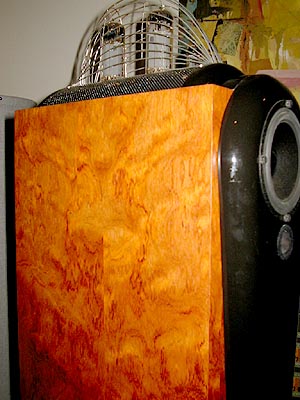 |
||||||||||||||||||
The breathy opening count-down effects on Curandero's "Segue" [Aras, Silverwave Records SD911] sounded like real voices in real space. Instrumental timbres rang true, a side benefit of all that resolving power. The interplay between Bela Fleck's famous banjo and Miguel Espinoza's virile Flamenco guitar with their classical music reminiscences played out with superb speed and inner detail. And in the deep background, Ty Burhoe's percussive tabla whacks filled out the great rhythms of Kai Eckhardt's slap bass. This CD -- and this track in particular -- are a tough test for midrange drivers and tweeters. There's an enormous amount of musicianship exploding simultaneously from four instrumental masters - banjo, guitar, background and foreground voices, tablas and electric bass weaving around one another with agile virtuosity like wild tendrils. |
|||||||||||||||||||
 |
|||||||||||||||||||
| Your system damn-well better be highly
resolving lest this complicated music degrade into a confused,
unintelligible mÚlange. The 108s succeeded admirably, separating all
the strands out of this complex mix without a hint of struggle. Of
course, all this high level of midrange/treble resolution and clarity
means naught if it came at the expense of a neutral balance.
Hyper-detail can equate to a bright -- or worse, harsh -- sound. Not
the 108s. The tonal balance always remained smooth yet ultra-clear.
What may this be due to? In my opinion, we owe it to that glorious
midrange valve amplifier and wide-bandwidth driver. In the crucial
midrange, the 108s are comparable to my reference Wilsons. Treble extension could have initially been thought a potential Achilles heel but as you will read later, this had a quick and convenient remedy. |
|||||||||||||||||||
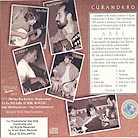 |
|||||||||||||||||||
| I
recently acquired some loud rock CDs from the White Stripes and Queens
of the Stone Age. Their in-your-face character demands explosive
midrange macrodynamics, especially in the rhythm-driving snare, toms
and explicit vocals. The 108s compared favorably with other good
designs I've heard, yet didn't dance to the level of dynamic extremes
that my Watt Puppys are renowned for. Don't get me wrong, the 108s
could rock. Still, their sophisticated rendition of space, detail,
resolution and timbre somehow diminish the all-out assaultive brutality
necessary for raw Rock'n'Roll. I felt a slight sense of compression, or
perhaps more accurately, a reticence, a homogeny and loss of impact when things got really heavy. |
|||||||||||||||||||
 |
|||||||||||||||||||
 |
|||||||||||||||||||
|
On to the divine Tori Amos. Her close-mic'd voice on Boys for Pele's "Way Down" [Atlantic 82862, 1996] sounded superb, with loads of presence and detail - though physical presence with this pretty lady would have been better yet, mate. Microdynamic transients were well defined as Tori's vocal salival effects -- for want of a better term -- arose in a natural and unexaggerated manner. But bloody WOW!
for sheer presence. Vocals sounded almost in-the-room. As the chorus
softly faded in towards song's end, that keen resolving power once
again shone through. Treble
detail and air on cymbals and such seemed a little reticent, however,
not quite as extended as I fancy. Here's where this design proved to be
oh-so versatile. Reaching 'round back, I clicked the treble dial to
position 2 (+1dB). There, done. The expected extension was delivered,
with an added sense of detail and top-end dynamics. |
|||||||||||||||||||
 |
|||||||||||||||||||
|
|
|||||||||||||||||||
When you dialed-in the bass just so, what you got was deep, tight and powerful stuff that hit you in the chest like a cardiac arrest. Just try Primus' "My Name is Mud" from the excellent Pork Soda [Interscope 92257-2, 1993]) but keep your finger at the ready - on the wireless' 9 for 911 (0 for 000 in Australia). The kick drum whacks and electric bass dexterity of Les Claypool had most realistic displacement and impact, with speed that didn't rob this CD of its tremendous rhythm and pace. Quite remarkable for a single 8" driver per box. The generous bass was taut, suitably massive, deep and robust. Excuse me, I think the ambulance is just outside ... |
|||||||||||||||||||
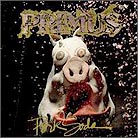 |
|||||||||||||||||||
Another bass favourite of mine is Brian Bromberg's Wood [A440 Music Group 4001, 2002]. This is a very well-produced CD in which Brian plays various types of upright basses, sometimes solo and on some tracks accompanied by a tight ensemble of Jazz cats. The way the 108s reproduced his various basses was quite outstanding, the timbral qualities of each instrument clearly discernable thanks to superb detail, transient fidelity and tonal accuracy. The leading edges on notes and forceful plucks were clean, fast and hellaciously dynamic. By comparison, my Watt Puppies had slightly more weight and power -- direct hot-line to the triage nurse -- but, believe it or not, at the expense of speed in this comparison. In addition, the 108s elicited a smidgen more apparent detail. |
|||||||||||||||||||
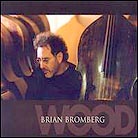 |
|||||||||||||||||||
| A CD superb for appraising imaging, ambience and soundstaging is Astor Piazzolla's Luna
[IRS/EMI 25595]. "Hora Cero" is set inside the ambience of a large live
venue when Piazzolla enters with some subtle effects created by hitting
and scraping the side of the bandoneon, the double bassist following
suit by scraping his strings and knocking on the instrument's body.
It's these fast transient effects which a good pair of speakers must
reproduce accurately (the 108s already covered this ground in the
preceding paragraphs). However, the Aussie speakers also
recreated the sense of venue ambience as buried deep within the
reverberant trails and post-note decays of said transients. The sense
of a cavernous hall became evident in the audience noises and general
reverberation. This reinforced the impression that the 108s were
erecting a wide and deep virtual soundstage with steady, precisely
placed images without drift. |
|||||||||||||||||||
 |
|||||||||||||||||||
|
|
|||||||||||||||||||
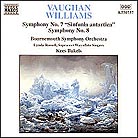 |
|||||||||||||||||||
The cello, you say? What about it? Well, in one word: Superlative, what with that elusive rosin sound of bow scraping string, while the instrument's physical body and presence came voluptuously alive! Once again oodles of detail and timbre revealed the exact nature of this particular instrument, all beautifully balanced from the highest to the lowest register. Ditto for the piano which simply rang true. I also spun diverse violin pieces such as Bach's Violin Concertos (David and Igor Oistrakh), Vieuxtemps' Concerto No 5 (Heifetz) and some other shorter ones. I found the same faithful recreation of their instruments as I already found with the cello. Another great strength of the 108s then is the peculiar yet harmonically rich timbre of strings with their challenging attacks. Coincidentally, my findings were vindicated by Goran's revelation that the 108s have found favor with certain members of the string sections of the Sydney and Melbourne Symphony Orchestras. Well, wouldn't you know it? It's good to be king |
|||||||||||||||||||
 |
|||||||||||||||||||
 |
|||||||||||||||||||
|
"He is north, I am south. There is nothing to discuss." (Versace on Armani) I've
had the pleasure of enjoying the 108s in-house for quite a number of
weeks. Being a member of a wide audiophile circle has meant that in
said period, I've had numerous visitors chez Edgarrrrrr's. With
amusement, I've studied friends' reactions to these pieces of Art Deco.
Some smiled with pleasure, others sniggered in disapproval. Some loved
'em, some hated 'em. On looks, polarized describes their combined opinions - two tribes on opposite sides of the river. |
|||||||||||||||||||
 |
|||||||||||||||||||
 |
|||||||||||||||||||
| Manufacturer's website | |||||||||||||||||||